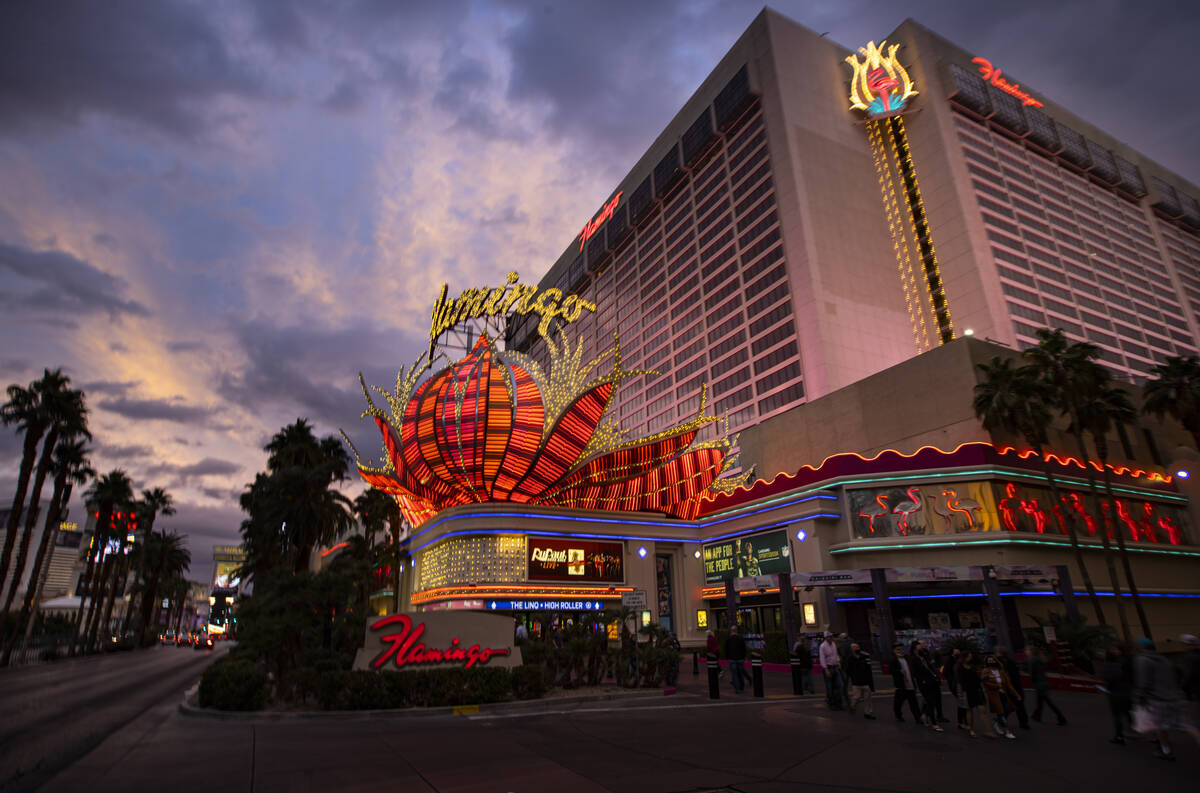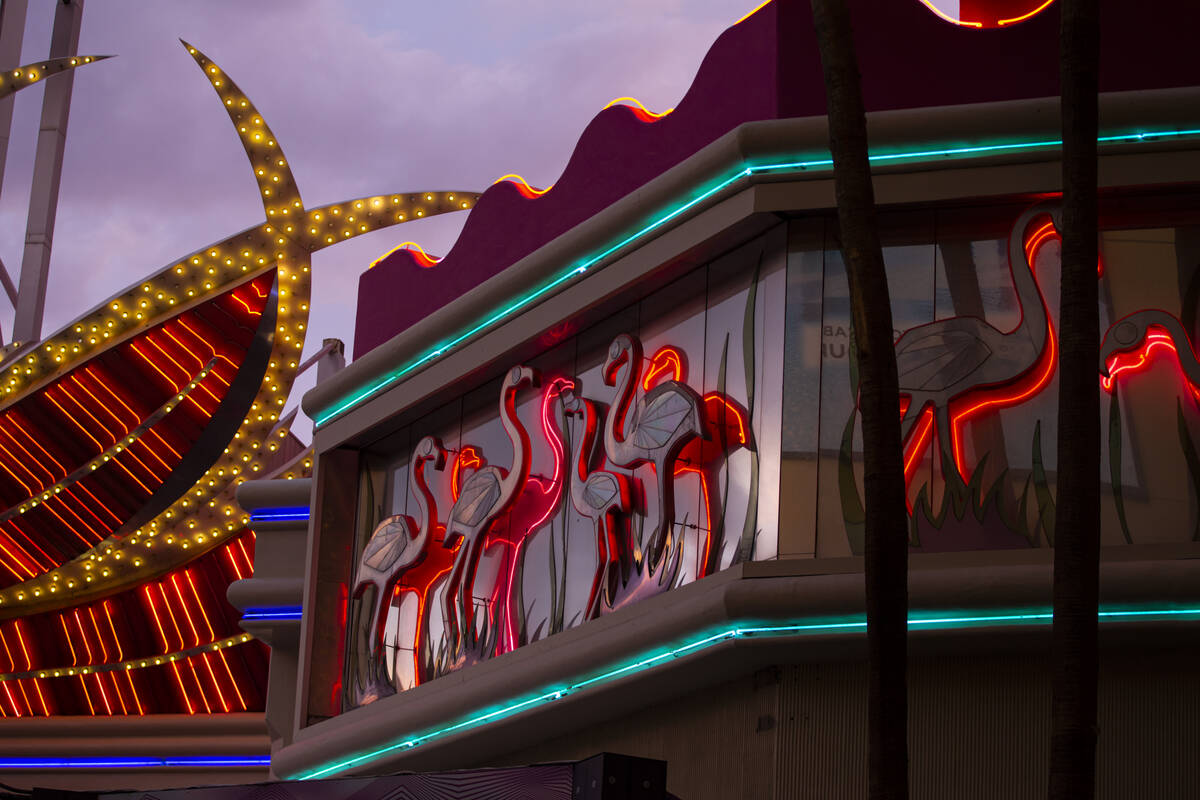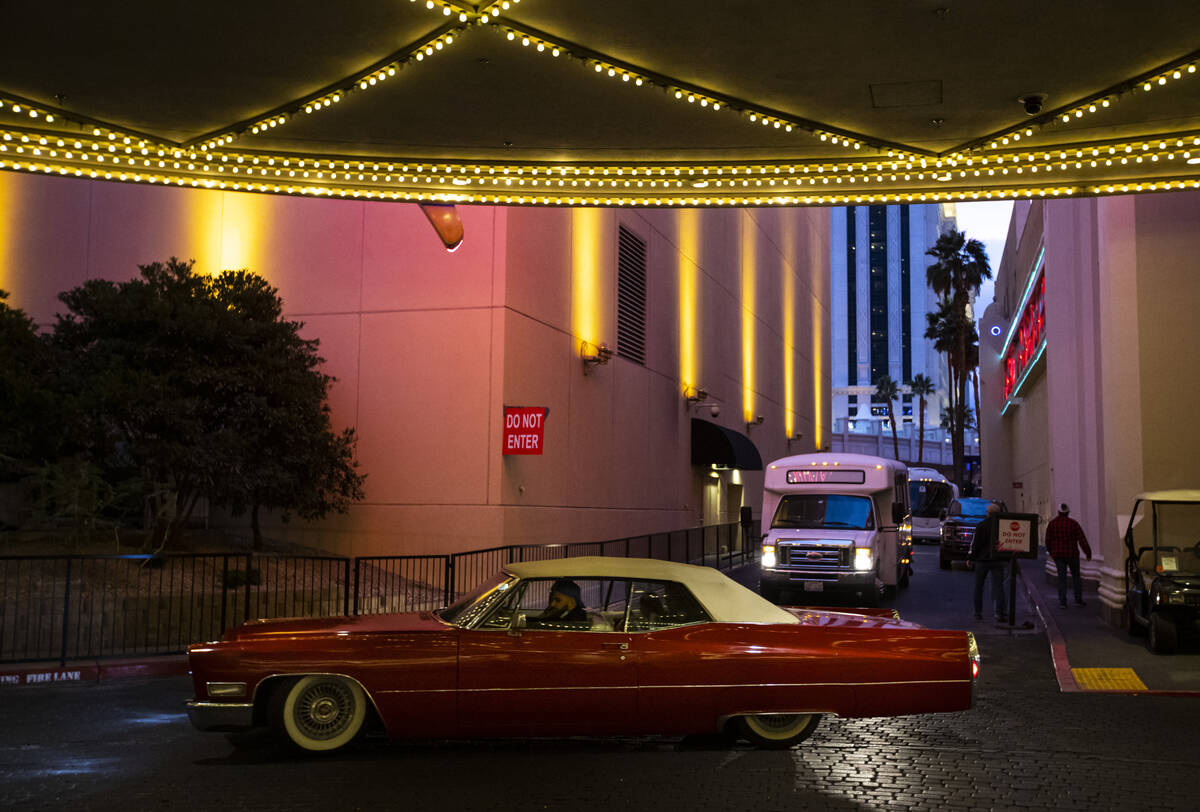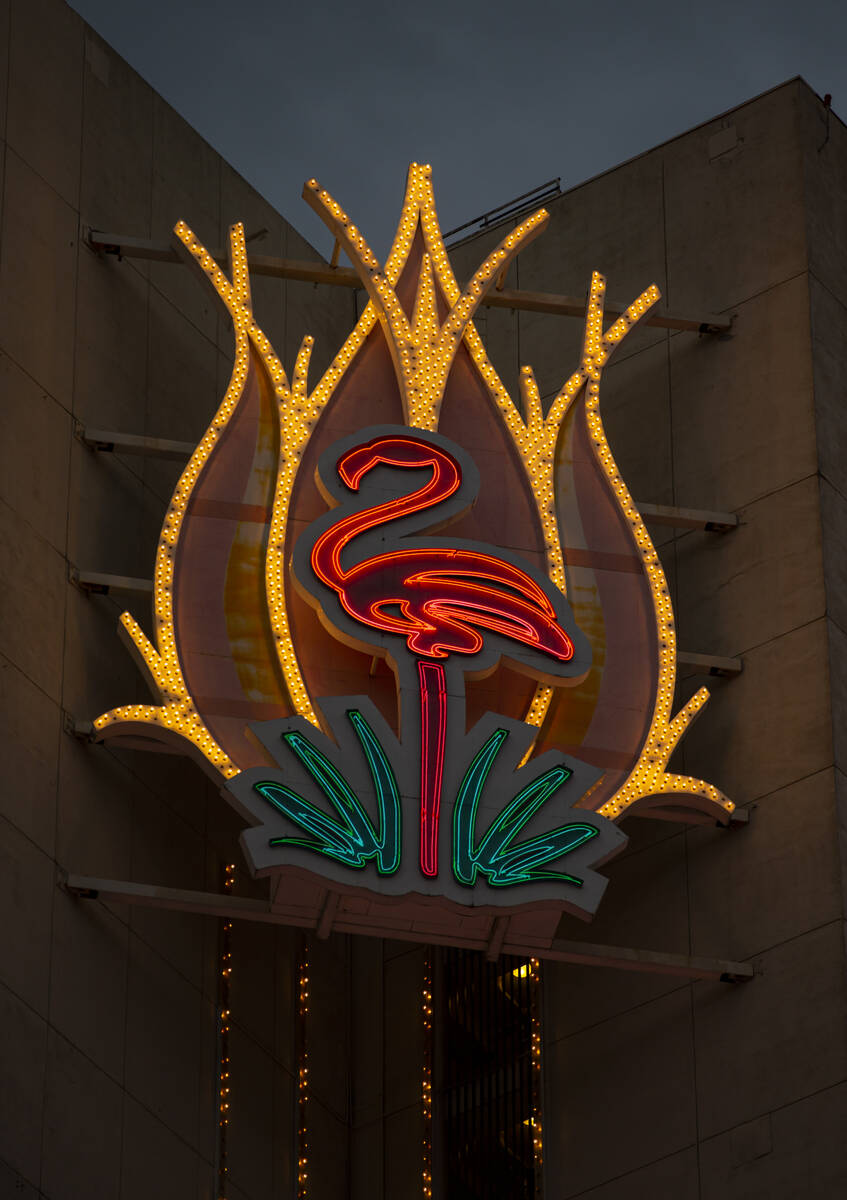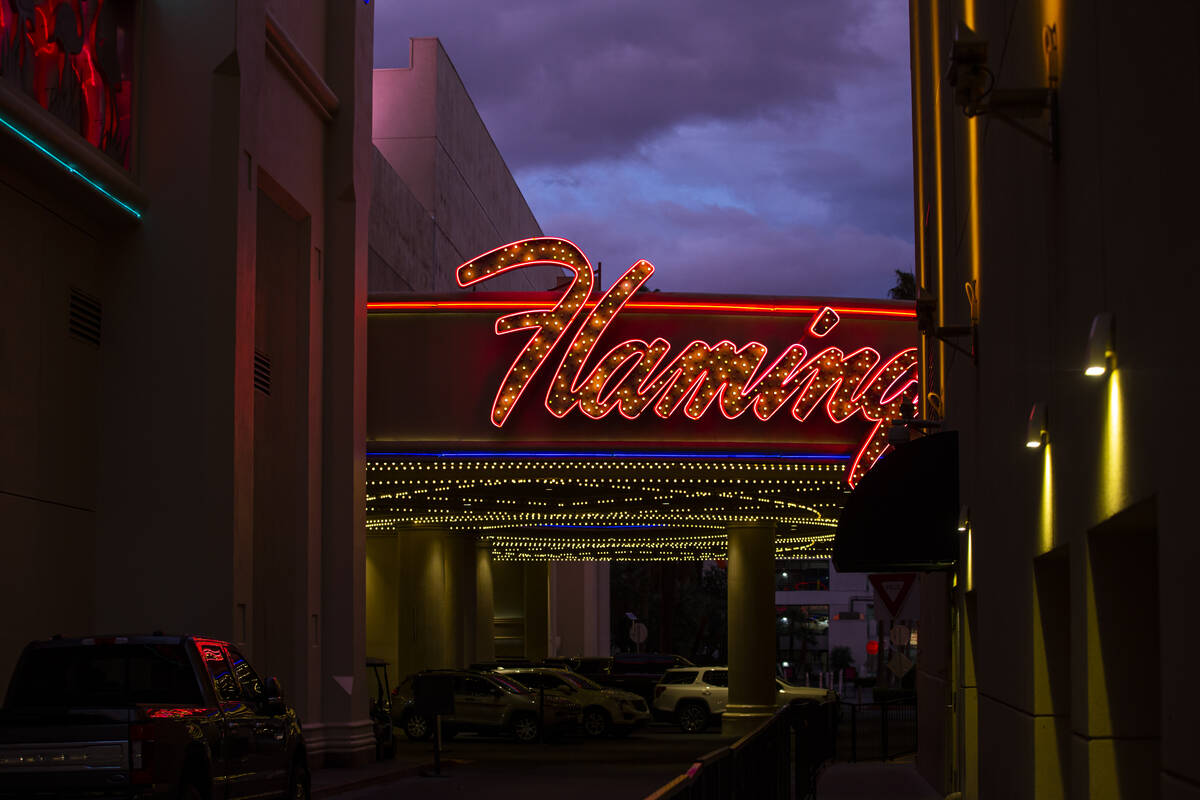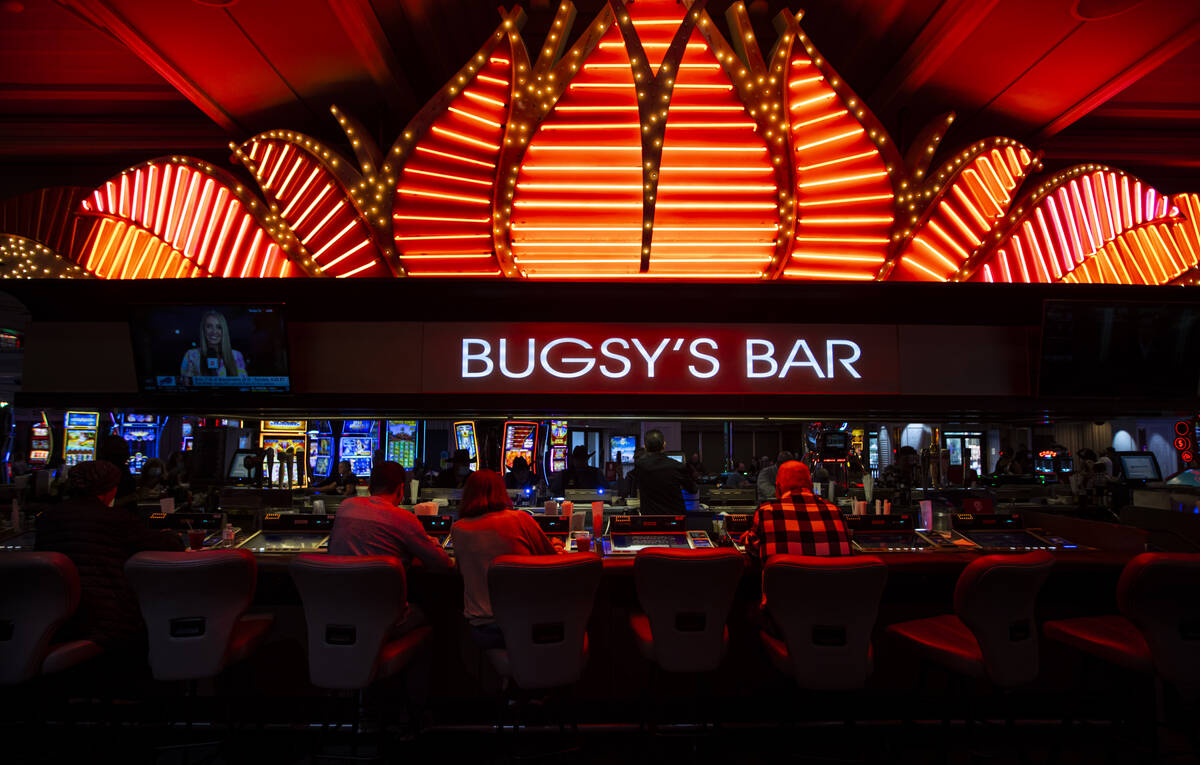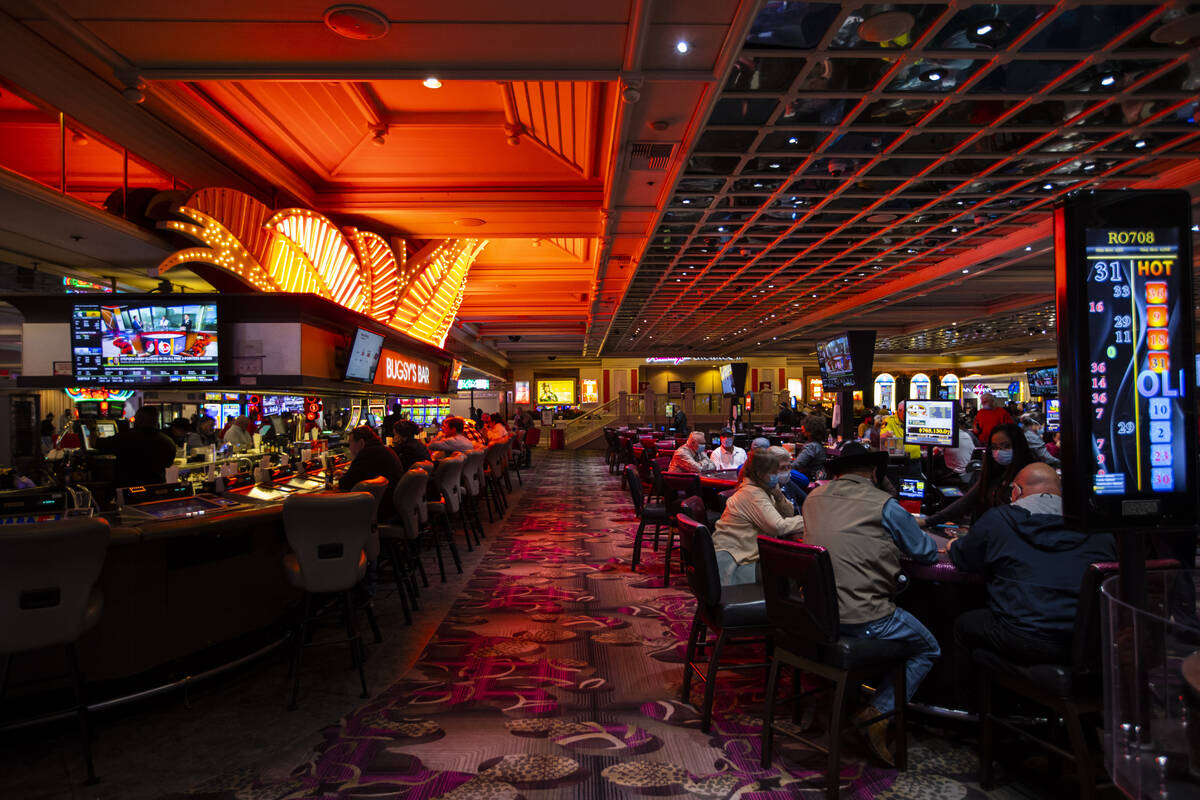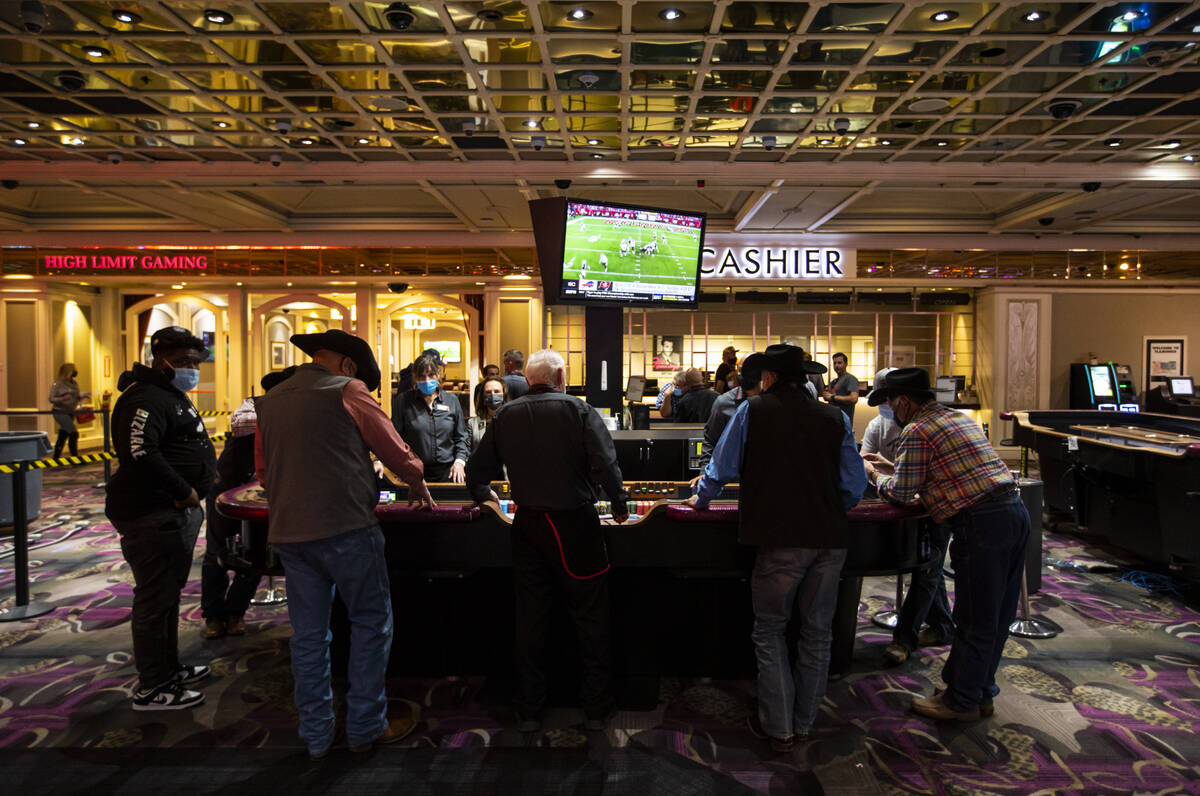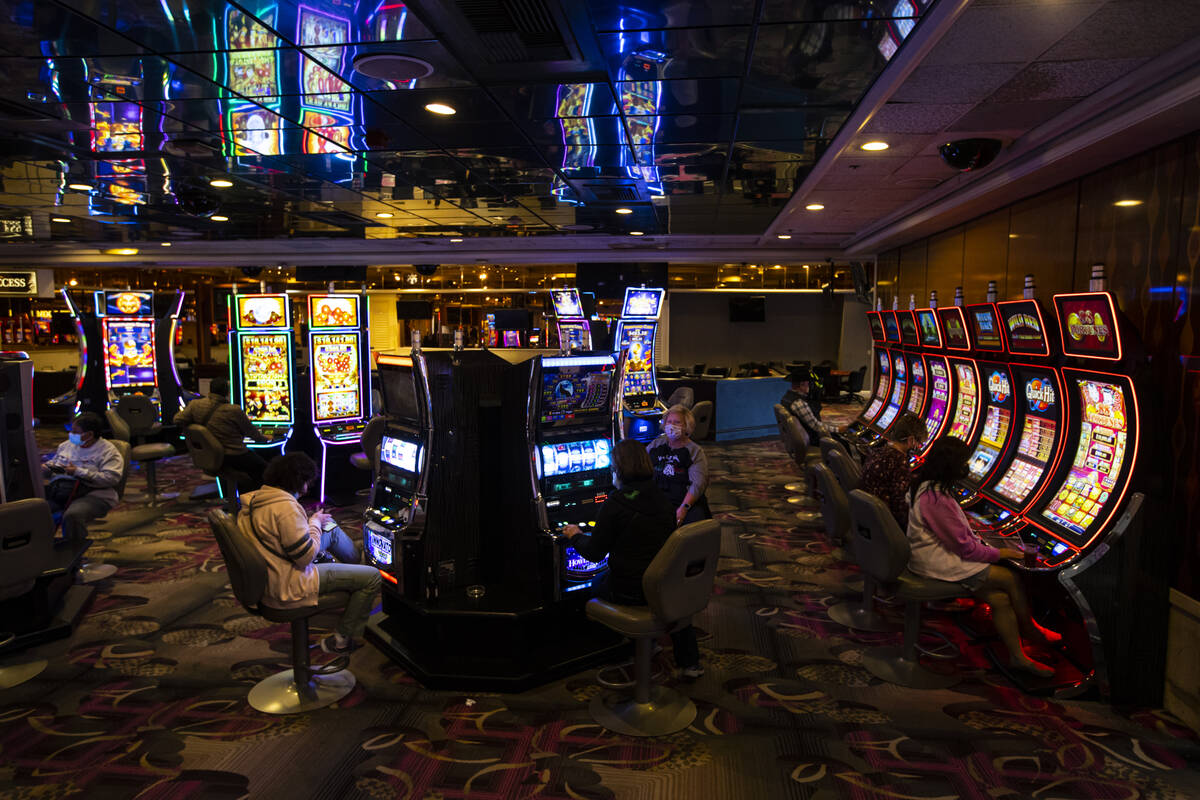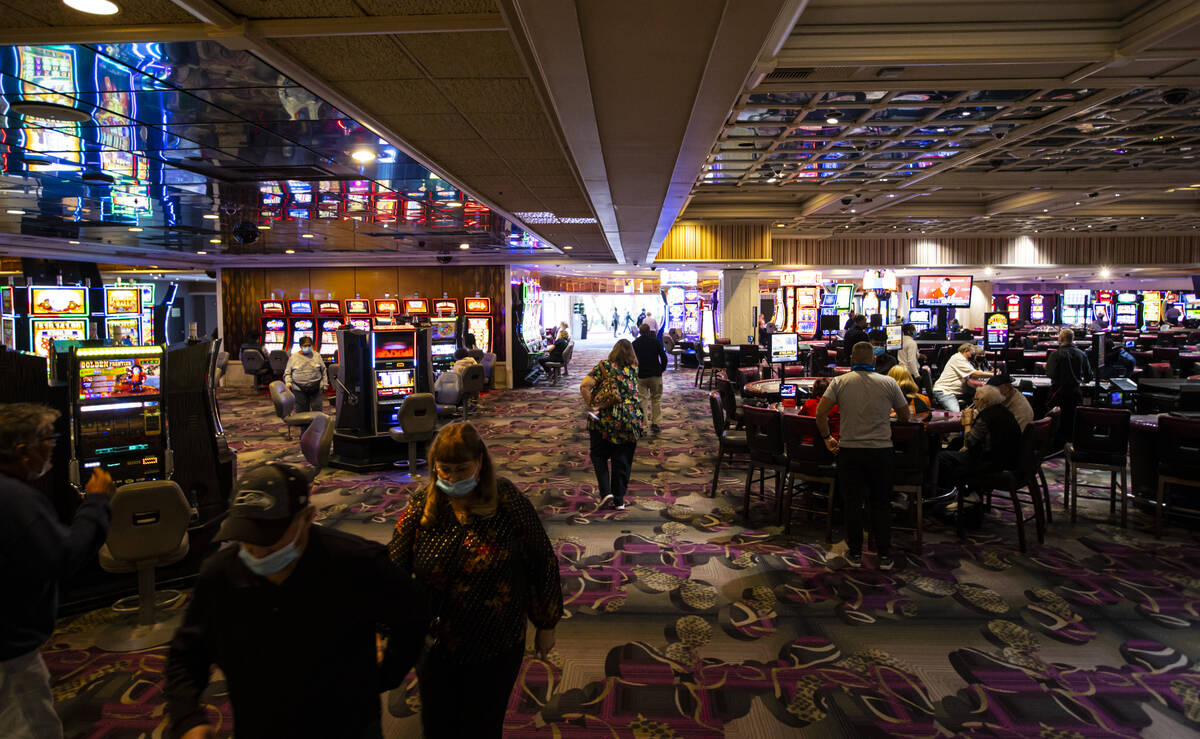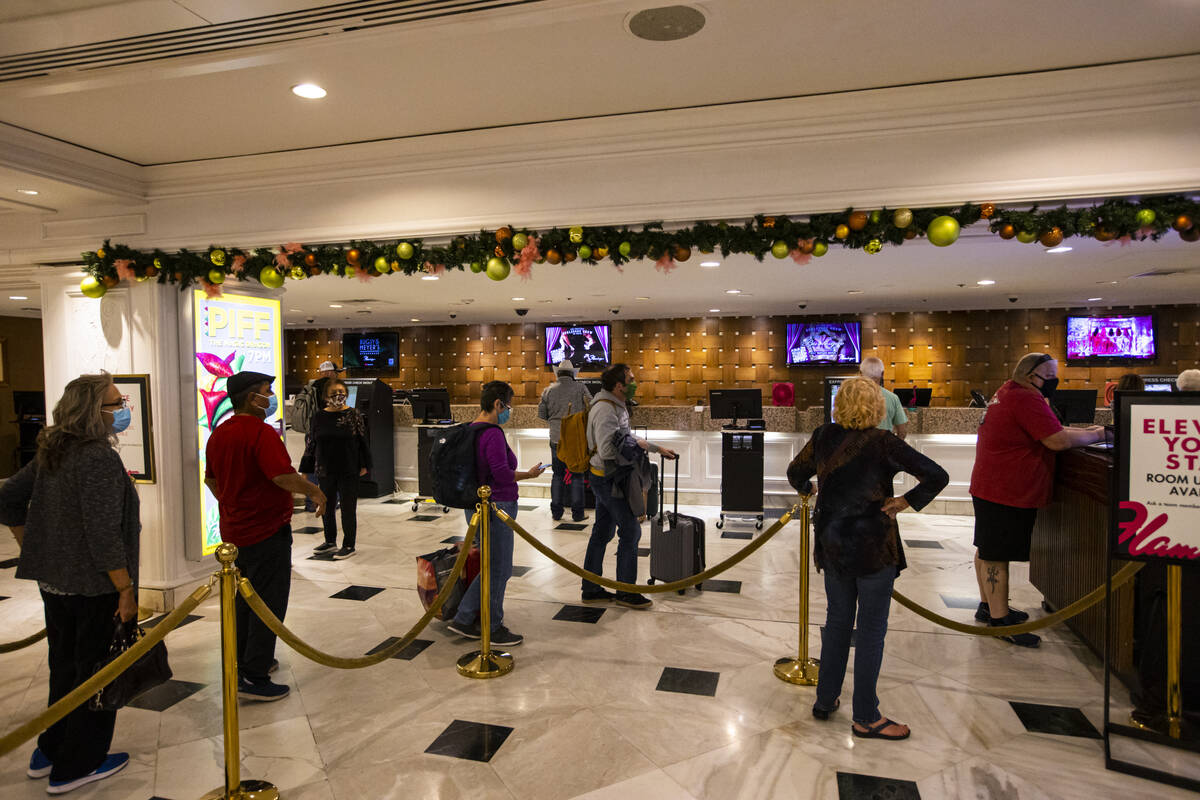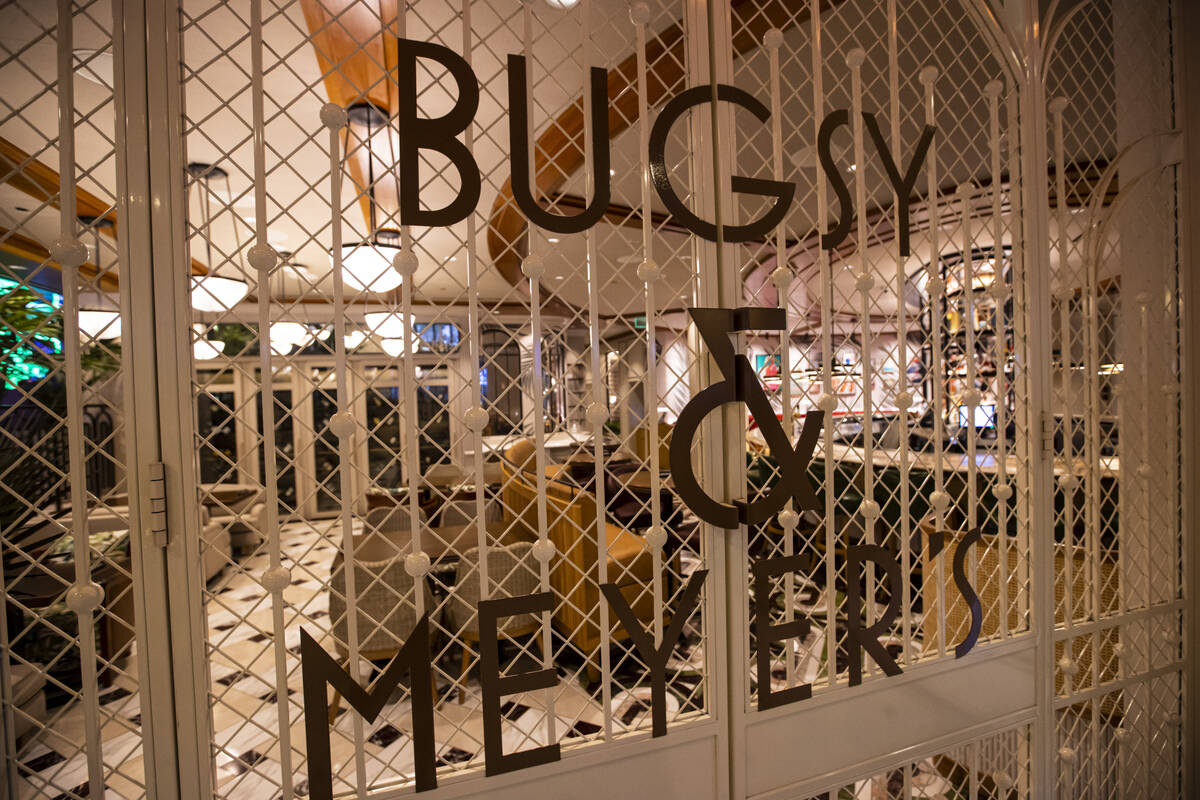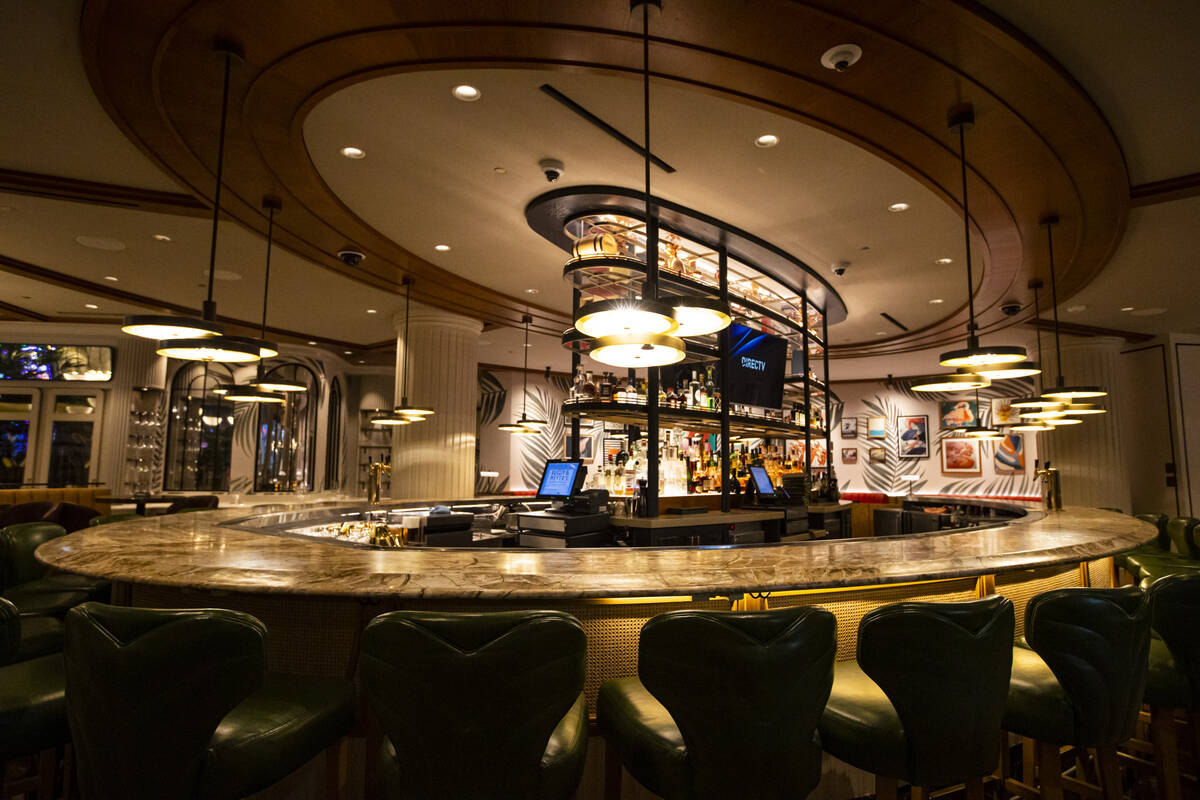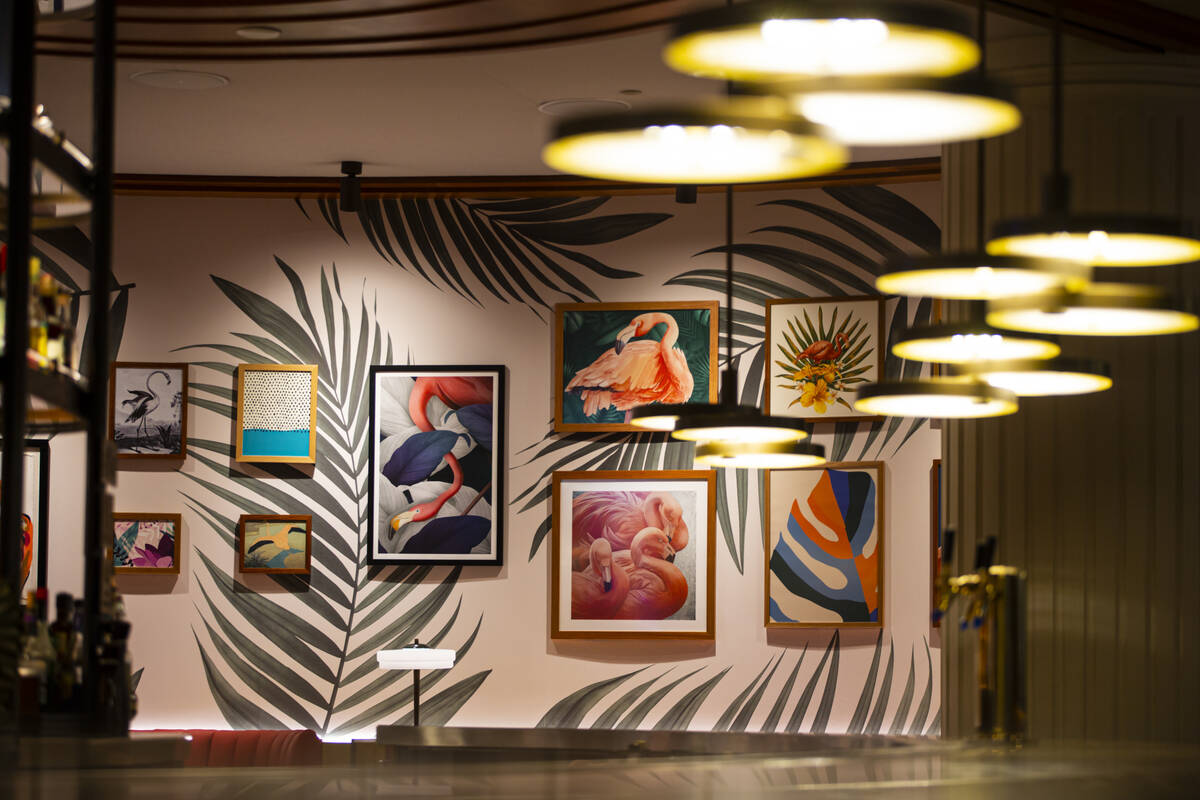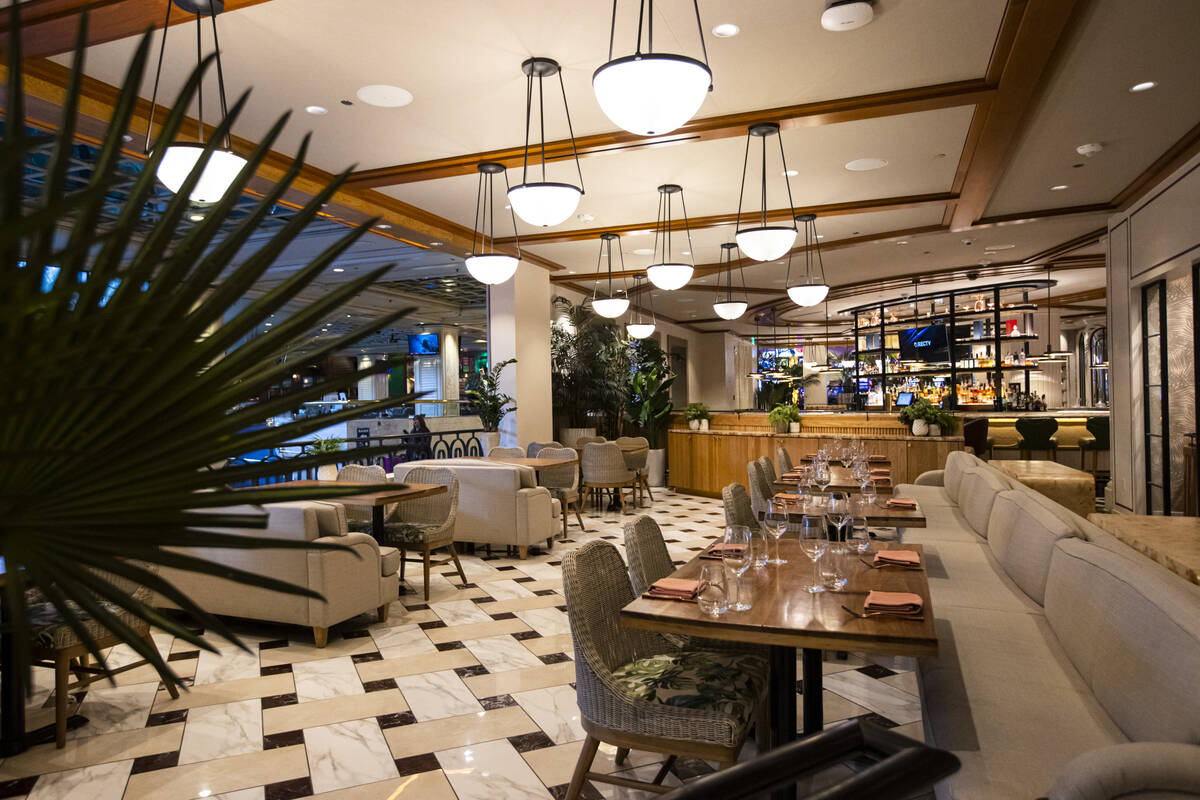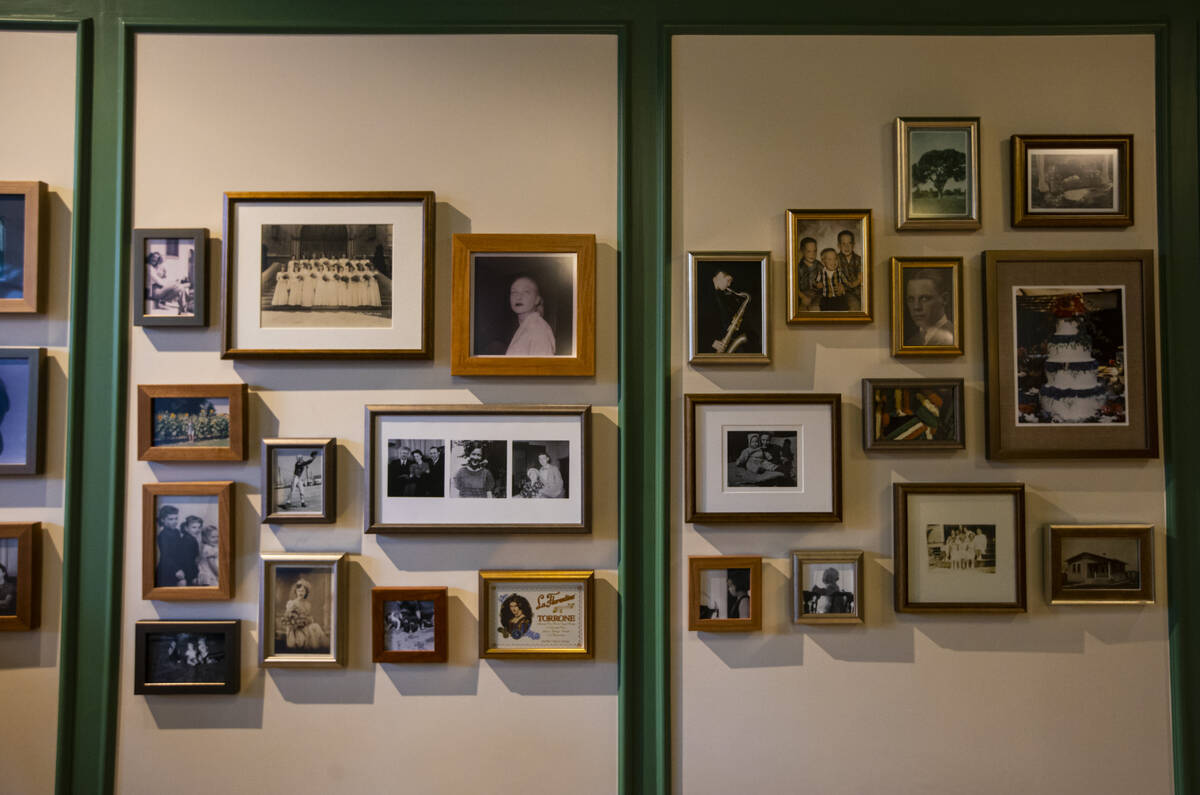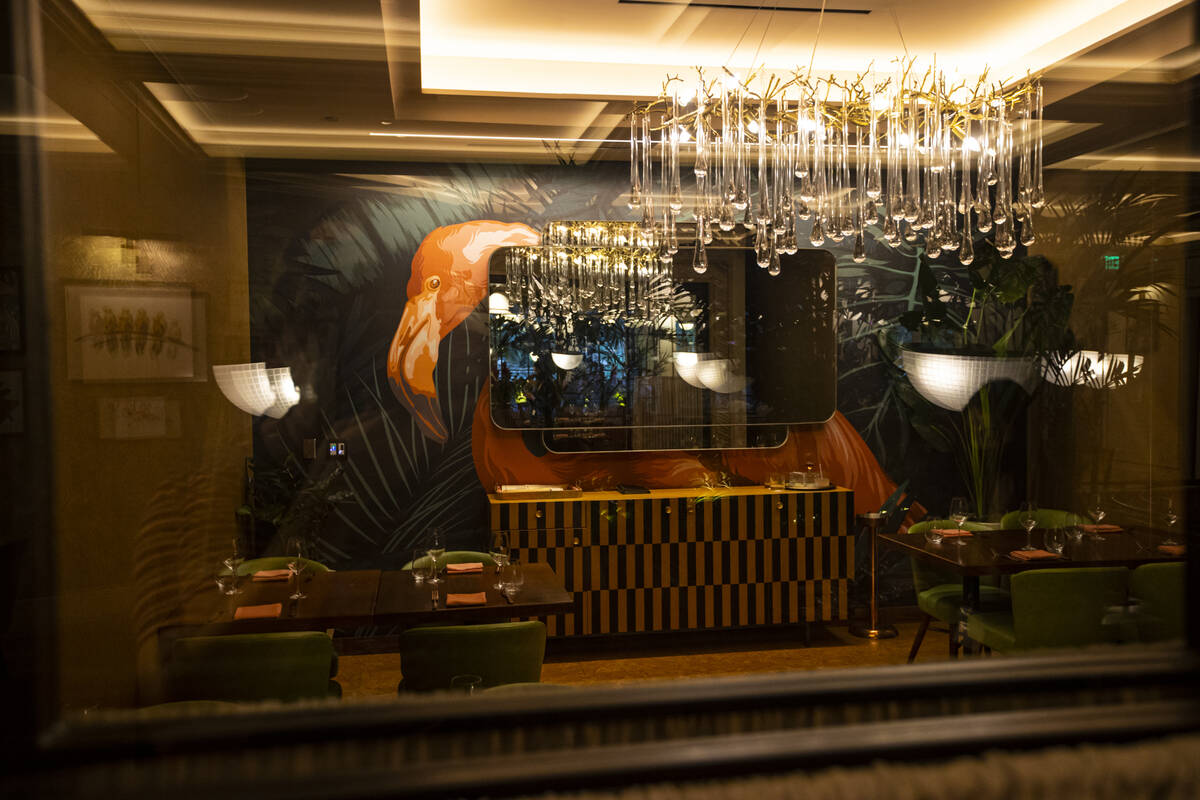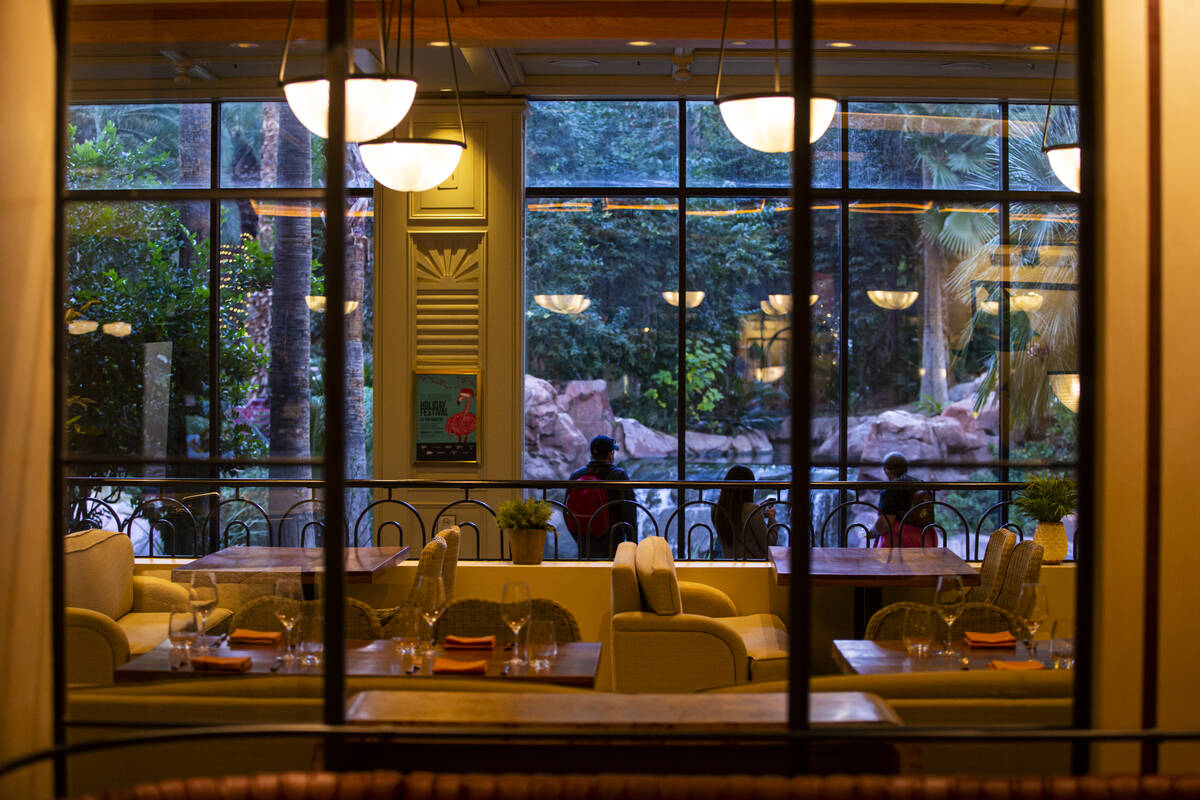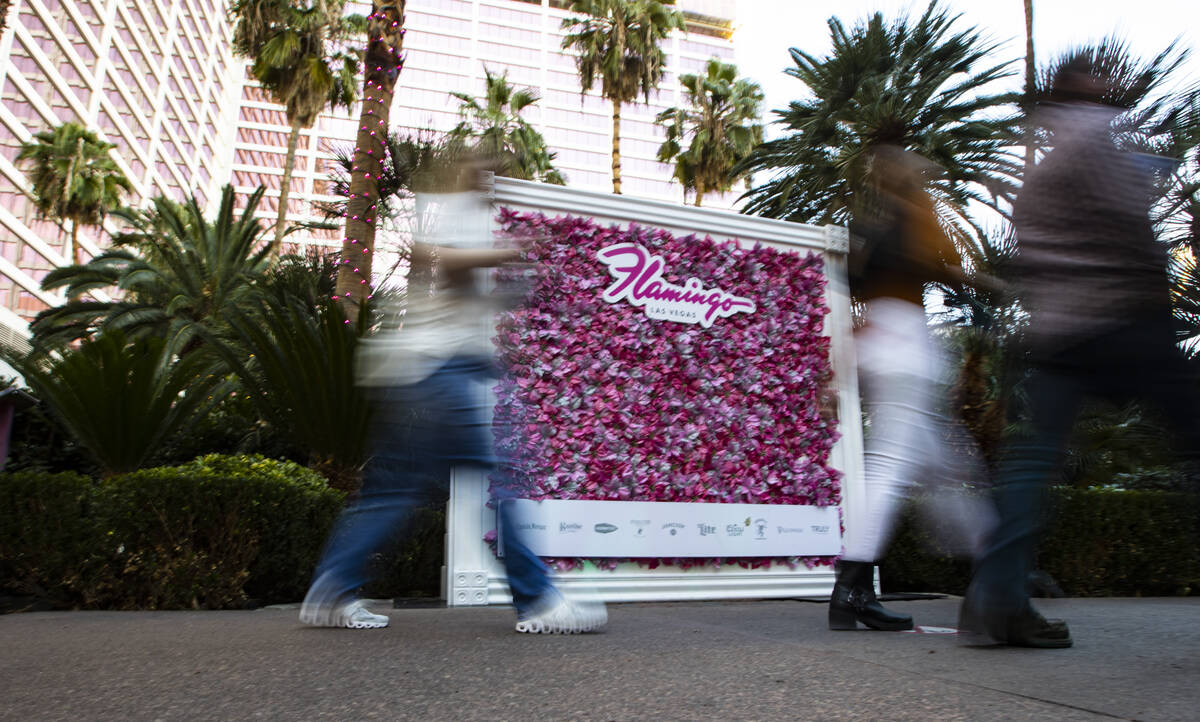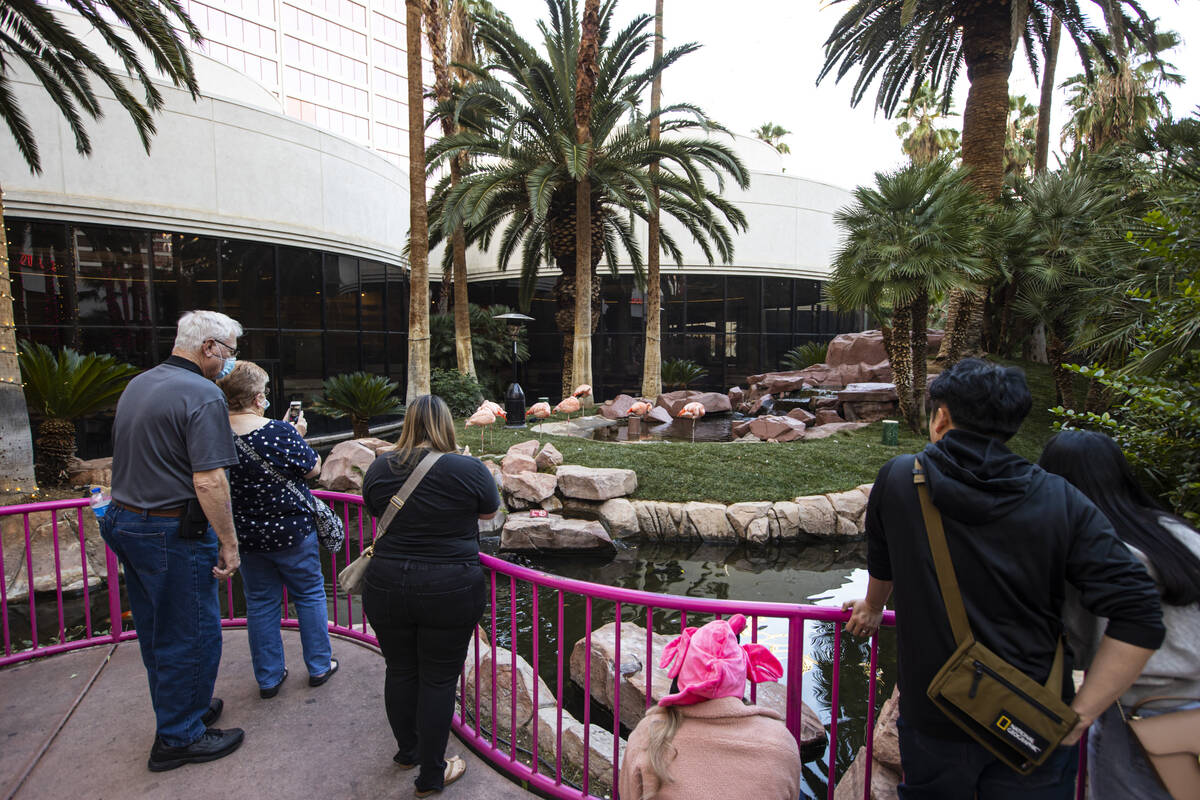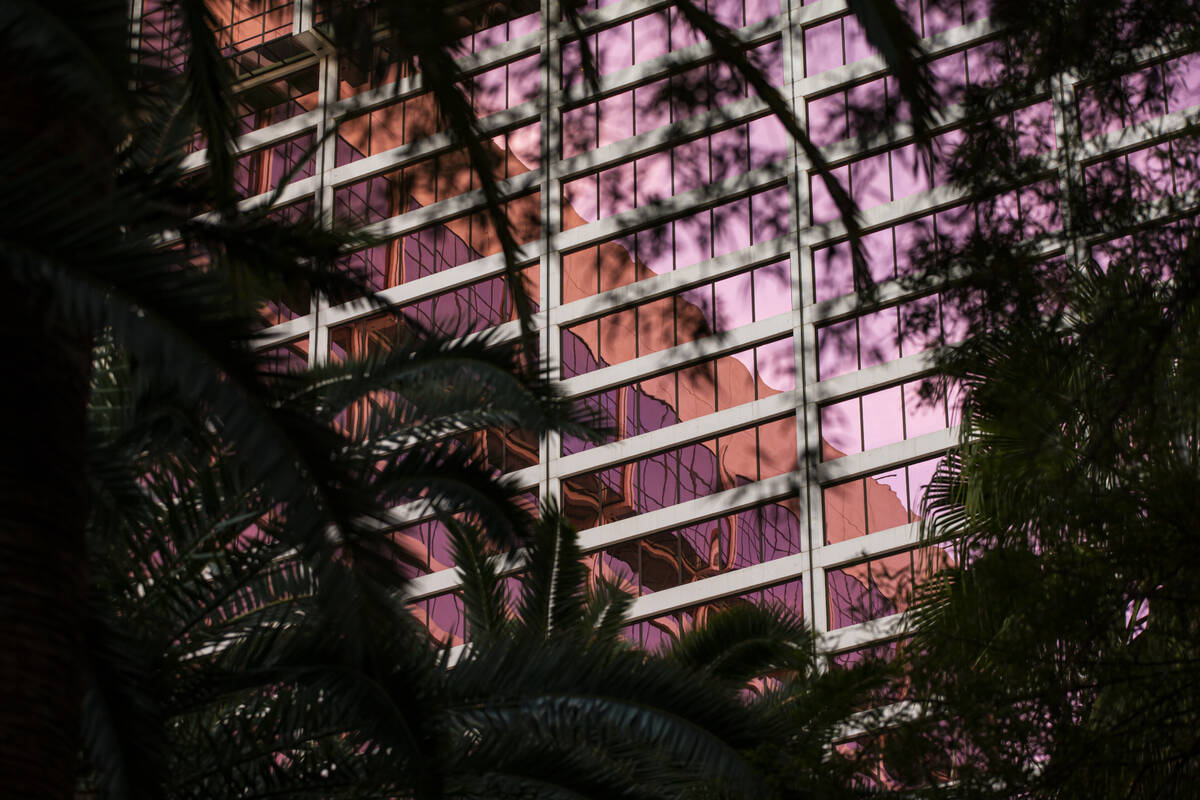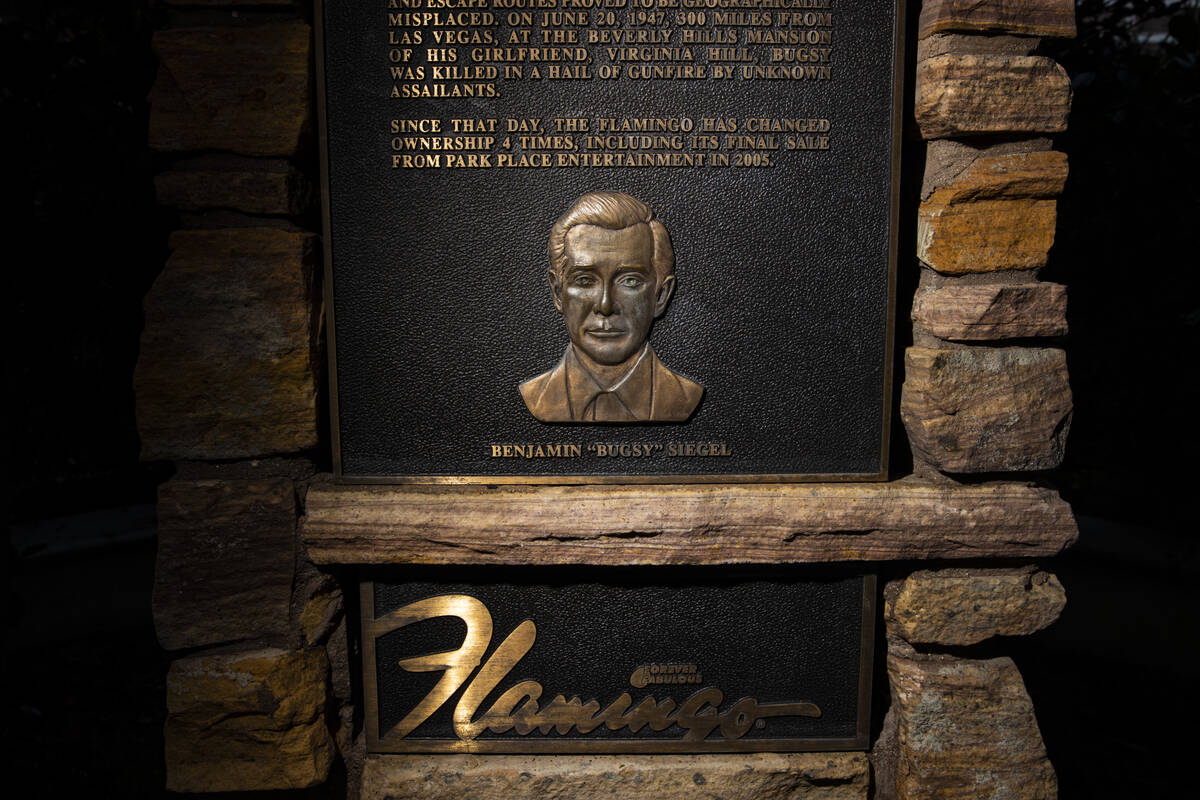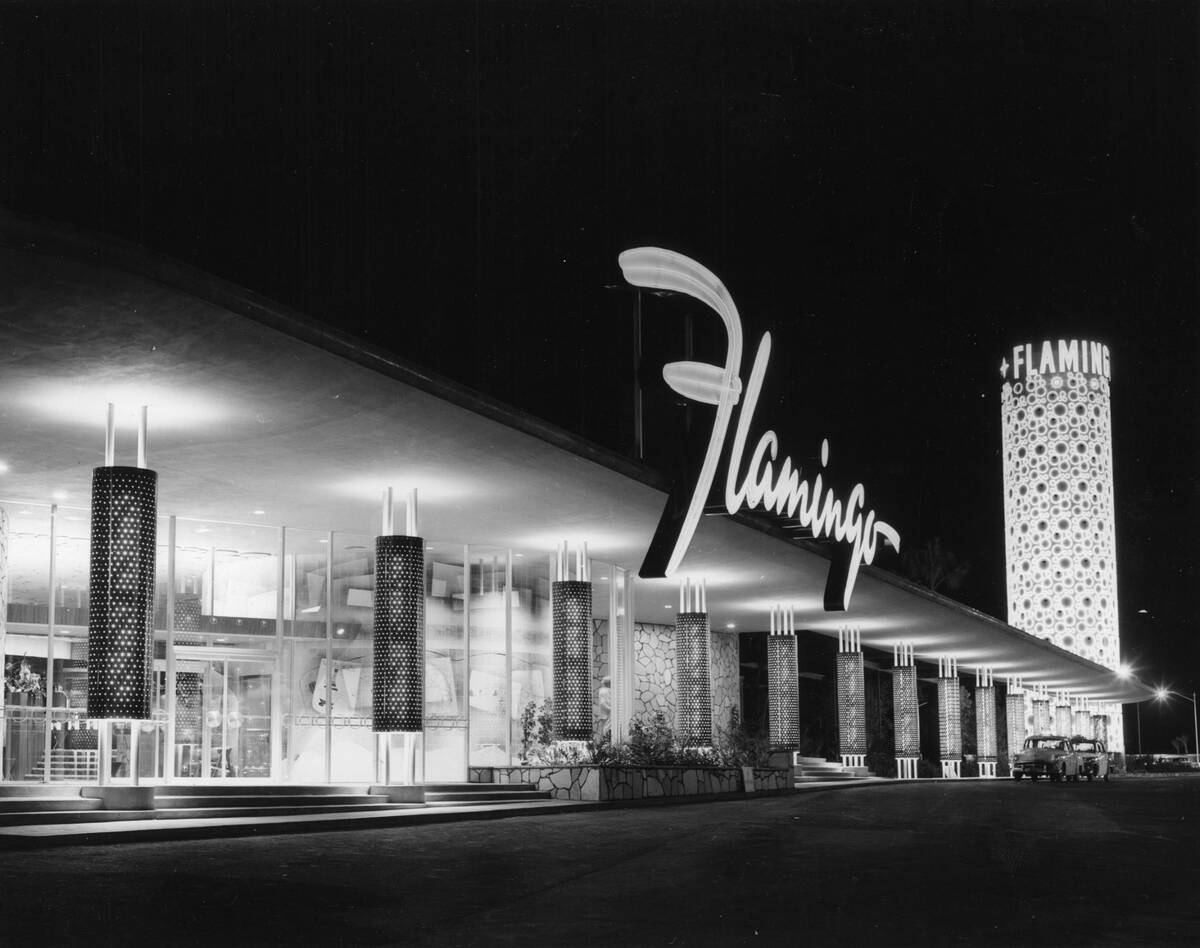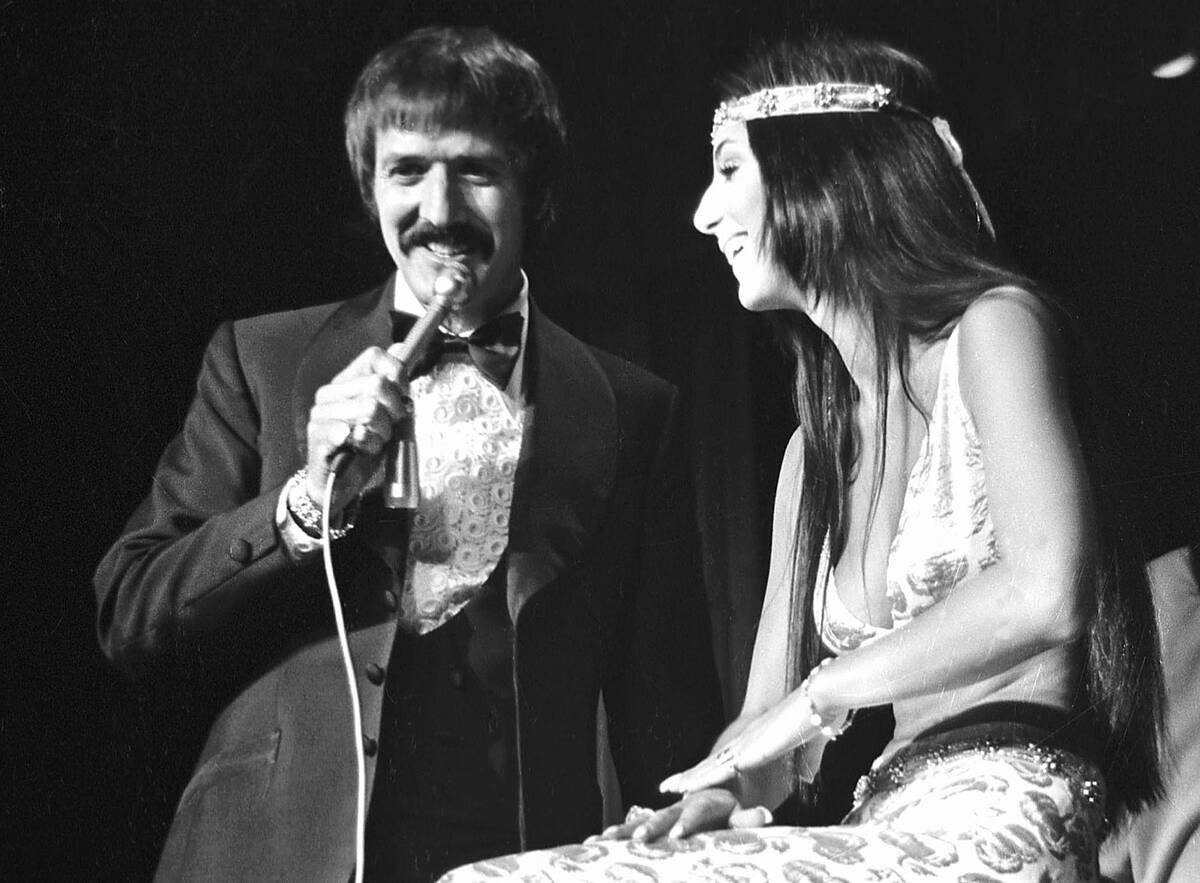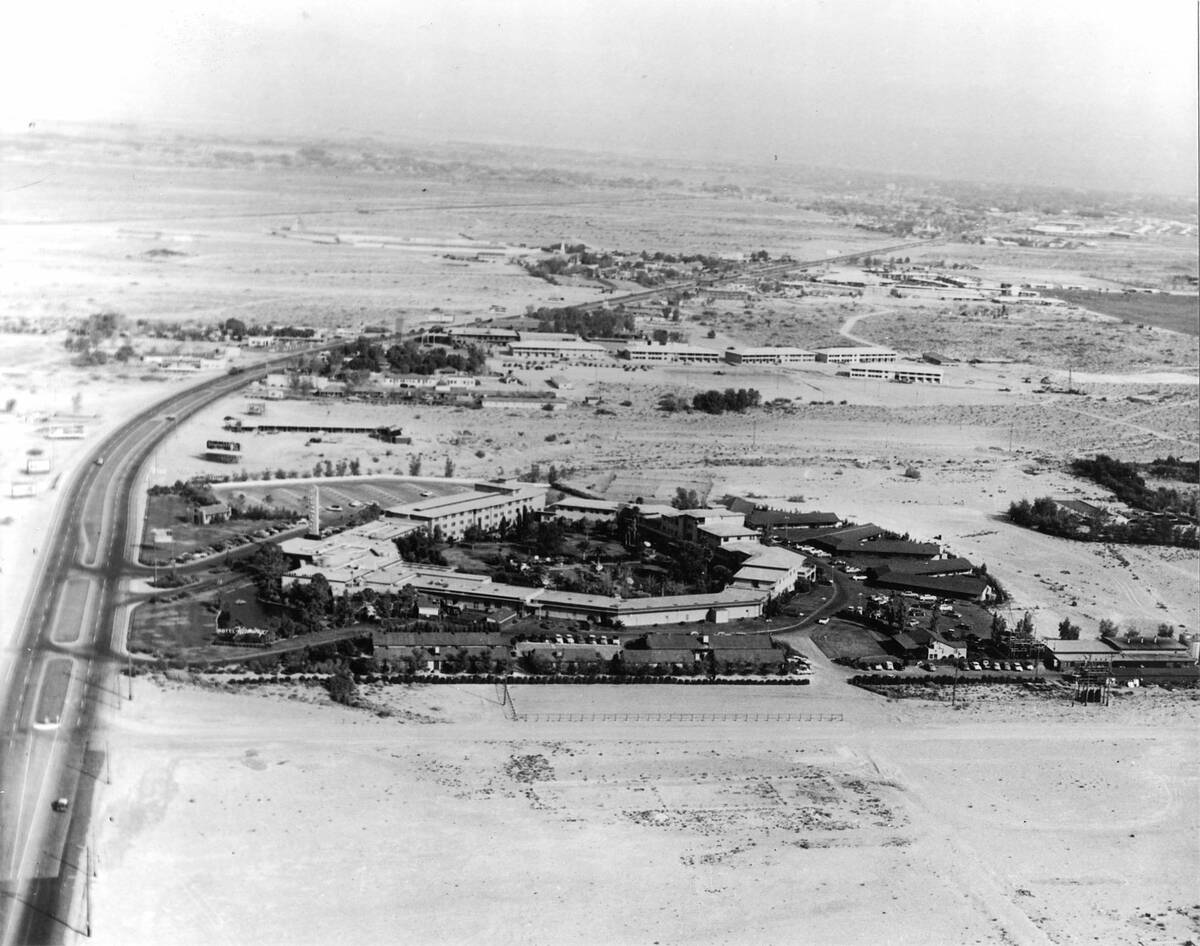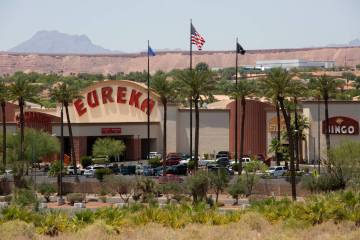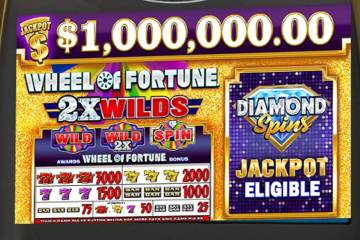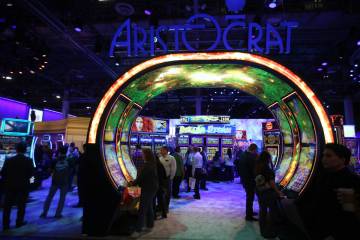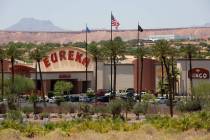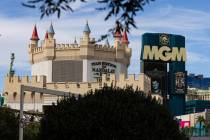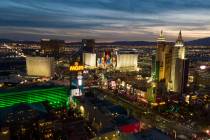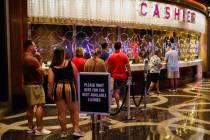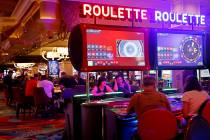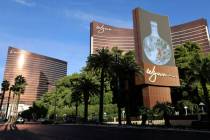The Flamingo, one of Strip’s most iconic resorts, turns 75
Accepting the past can be difficult, especially when it involves murder and mobsters.
When the Flamingo turned 50 in 1996, there was no celebration, no fanfare to mark the occasion, no public recognition of the resort’s origins and its ties to Benjamin “Bugsy” Siegel and the mob.
Las Vegas was in the midst of a culture shift. The era of mob rule had come to an end by the mid-1980s. Megaresorts such as The Mirage, Treasure Island and Luxor were opening all over the Strip, and Las Vegas was growing ever conscious of its public image.
“The Bugsy image was not something that was particularly endearing to the Flamingo or Hilton,” Flamingo Hilton spokesman Terry Lindberg said in 1996, the Las Vegas Sun reported at the time. “This was not George Washington or Abraham Lincoln. We’re talking about a robber, rapist and murderer. Those are not endearing qualities. We want to remember the history of the Flamingo without glamorizing it. We’ve made a conscious decision to distance ourselves from the Bugsy heritage.”
Undeniable part of history
A quarter-century later as the hotel commemorates its 75th anniversary, those sentiments are changing.
The Flamingo isn’t outright celebrating the mobsters who opened the resort, but there’s now some level of recognition of those origins.
In 2020, the Flamingo unveiled the new Bugsy and Meyer’s Steakhouse, a throwback-style restaurant named after those two mobsters, Bugsy Siegel and Meyer Lansky. There’s even a memorial plaque to Siegel that now sits in the resort’s famed flamingo habitat.
“I think it’s just that it’s acknowledging the true history of the Flamingo. It’s an undeniable part of the history, and it’s something that’s unique to Flamingo, and leaning into that and sharing it we thought was appropriate. Certainly not condoning the method of operations, but it is a part of the history of the Flamingo,” said Sean McBurney, president of regional operations for Caesars Entertainment, the current operators of the Flamingo.
Coupled with moves like the opening of the Mob Museum a decade ago, UNLV history professor Michael Green said that the acceptance shows the maturity of the city, “that we can actually look back at this mob past and, granted that we may be too nostalgic about it, but still look at it and come to grips with it.”
Now at 75, The Flamingo is the oldest resort on the Strip. Its past, which includes everything from the mafia to Kirk Kerkorian to the decade-long run of Donny and Marie Osmond, is a reflection of the Strip’s history and the iconic corridor’s ability to reinvent itself time and time again.
“It is a hotel that really is a pivot point for Las Vegas,” said Larry Gragg, an emeritus history professor at Missouri University of Science and Technology and author of the 2015 book “Benjamin ‘Bugsy’ Siegel: The Gangster, the Flamingo, and the Making of Modern Las Vegas.”
The Bugsy years
Siegel gets most of the credit for opening the Flamingo, but the idea to build a Miami-beach style hotel in Southern Nevada actually came from his one-time business partner Billy Wilkerson.
Wilkerson was a successful Los Angeles businessman in the 1930s and 1940s who founded The Hollywood Reporter and owned several popular nightclubs on the famed Sunset Boulevard. He was also a compulsive gambler who would routinely spend several thousand dollars in Las Vegas at a time, according to his son, Willy Wilkerson, who wrote the biography of his father titled “Hollywood Godfather: The Life and Crimes of Billy Wilkerson.”
One night, Wilkerson confessed his gambling problem and the financial woes that followed to his friend Joseph Schenck, the wealthy film executive and chairman of 20th Century Fox. Schenck, a gambler himself, had a solution to Wilkerson’s woes: Build a casino and own the house.
“The inference was that if you lost, the money would be cleverly recycled. So my father, losing the majority of the time, would be able to indulge his addiction and at the same time be making money for his casino. So it was like a win-win. That’s basically where it started,” Willy Wilkerson said.
Wilkerson started building the resort in 1945, but by early 1946, the project was out of money as the compulsive gambler had lost hundreds of thousands of dollars in other casinos in town.
Flamingo’s enduring impact
Enter Siegel, a longtime bruiser for the mob who had already established himself in the Las Vegas scene through the horse race wire services and investing into other casinos on Fremont Street. Wilkerson needed money, and the mob was a willing partner. Siegel and his associates bought two-thirds of the project and eventually forced Wilkerson out.
Siegel upped the stakes of luxury for the project, and with it the price tag. The cost of building the resort ballooned from around $1.2 million to an estimated $6 million by the time construction was complete.
Finally, on Dec. 26, 1946, the Flamingo opened its doors for the first time. And it did so in what would become true Vegas fashion, attracting top headliners for the three-day grand opening including radio comedy star Jimmy Durante and bandleader Xavier Cugat.
But it wasn’t long before problems cropped up. The resort opened with its hotel incomplete, and a string of gambling losses that historians including Gragg chalk up mostly to terrible bad luck eventually forced the resort to close after just six weeks. The Flamingo reopened with the hotel construction complete on March 1, 1947, and would go on to be a great success.
The same can’t be said about Siegel.
On June 20, 1947, while in the Beverly Hills home of his girlfriend Virginia Hill, Siegel was shot dead. That murder remains unsolved to this day, though most historians believe the mob was involved in some fashion. Gragg said more than a dozen people have been suggested as the hitman over the years.
According to Gragg, mobsters Moe Sedway and Gus Greenbaum walked into the Flamingo and announced that they were taking over within 15 minutes of Siegel’s death some 300 miles away,
Those early years, and the mystery surrounding Siegel’s death, helped fuel the mystique of both the Flamingo and Las Vegas and kick-started a brand-new era in town.
“The Flamingo confirms the adage that truth is stranger than fiction. It was a short window of time in Las Vegas that proved to have lingering effects for decades,” said Geoff Schumacher, a longtime Las Vegas journalist who now works as the vice president of exhibits and programs at the Mob Museum. “I imagine, it’s possible that if Bugsy Siegel hadn’t built a luxury resort on Highway 91 as he did, we still may have ended up with the Las Vegas Strip. But he certainly accelerated that progress.”
From mafia to boardrooms
When the Strip started its shift away from mob-run in favor of a more corporate, commercial environment, the Flamingo was right there pivoting with it.
Kerkorian, who would go on to create some of the biggest resort casinos in Las Vegas, entered the Flamingo picture in 1967 when he bought the resort, cutting the casino’s ties with the mob completely and helping to signal the Strip’s shift to corporate gaming.
“In his first year, he reported his profits to the state. And they questioned it. Because they said it’s never made that much money before. And it hit everybody: Yeah, he wasn’t skimming anything. Who knows how much money was lost to the skim,” said Green, the UNLV professor.
Kerkorian didn’t hold onto the resort for long. He sold it in the early 1970s to Hilton hotels, which would go on to rename it the Flamingo Hilton.
When the next major pivot came to Las Vegas with the era of massive, integrated resorts in the late 1980s and 1990s, the Flamingo adapted once again. By 1993, the resort had grown to more than 3,500 rooms and even featured a 200-unit timeshare tower.
Lasting impact
In a way, there is no better reflection of the history of the Strip than the Flamingo itself.
“If you were going to do a history of the Strip and you want to do the life and times of the Flamingo, I think that’s a good way to do it,” Green said.
When the Flamingo opened its doors in 1946, the resort’s Miami Beach, Art Deco style was a bucking of the trend of Old West-themed hotels that was the norm in Las Vegas at the time. It was the first real luxury resort on the Strip, setting a precedent for comfort, amenities and entertainment options that remains firmly woven into the town’s fabric to this day.
Crime families had been involved in owning other casinos in town, but the Flamingo was the first mob-built casino in town.
It’s outlasted the Strip casinos that came before — it’s the only one built before 1950 that still remains — and many of those that followed. It was an early part of the shift toward corporate gaming and adapted to the era of integrated megaresorts.
The now 75-year-old resort is a living example of the history of Las Vegas, a remnant of an era that Las Vegas once tried to forget and now leans into. It’s been part of the town and the Strip’s evolution, from the Old West to ultra luxury, from mobsters to corporate executives. Every step forward, every shift, every pivot — the Flamingo has been there, changing right along with the city.
Contact Colton Lochhead at clochhead@reviewjournal.com. Follow @ColtonLochhead on Twitter.



